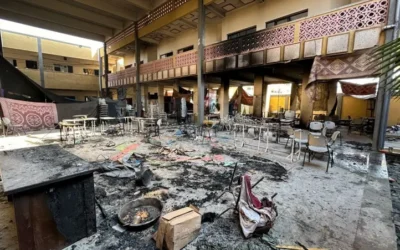From education-to-employment: transitions matter for Arab youth
While Arab youth struggle with life-changing transitions, from being students, to job seekers and job creators, their career readiness capacities are often criticized by employers. The mismatch between acquired skill sets and labour market needs has aggravated the region’s unemployment predicament for years.
The solution is far beyond providing traditional education or employment support. It is about securing the employability of youth by providing continued learning opportunities that are aligned with market demand. Youth need guidance and support throughout their education-to-employment journeys so that they don’t keep feeling unprepared for the next stage of their pathway.
Over the past year, communities around the world have had to contend with the impact of a global pandemic. It has not been easy trying to find solutions while education and employment landscapes are continually shifting. Young people in the Middle East face turbulent times ahead, and they are trying to navigate their education from a home-based learning situation knowing they need to prepare for an office-based, blended, or remote work situation.
Even though it has exposed socio-economic inequalities, gaps in the education-to-employment transition and a deepening digital divide, the pandemic has also awakened us to the needs of youth to survive uncertain times. There is a new energy for upskilling approaches and specializations that make youth more career ready, innovative, flexible, and independent. Corporates are aware of the need to practice more strategic workforce planning while also building continued learning and retention strategies into their business models. Companies are opening their Human Resource departments to virtual or face-to-face mentorships, internships, and on-the-job training opportunities as well as cooperative programs that provide real world experiences.
The reality of this last year has also pushed education specialists and decision makers to find solutions to rise to the complex challenges. We have witnessed successful exchanges of expertise within and across borders and sectors. Innovations are being developed and implemented to responsibly integrate IT-driven online, blended or in-classroom learning approaches.
Moving forward, there is a need to strengthen the links between education and corporate leaders. Professional learning takes on multiple forms. Upskilling and reskilling programs need to match the fast-paced realities of current and future job markets. Policy makers need to ensure that digital tools such as computers, devices and connectivity are part and parcel of IT-geared educational and work models.
As a result of shifting working patterns, work scenarios such as the blended model, a mix between remote work and face-to-face interactions, will have to be accepted by even the most traditional business leaders. This generation of employees needs to be prepared for non-traditional workspaces, flexible hours, different work modalities, new tech-related specialisations and redefined job roles, based on workforce supply and demand patterns.
The shifts we are currently experiencing have a common demand: greater digital skills. The jump in demand for youth to have work-related digital skills is an opportunity for stakeholders to innovate and explore new approaches in a space that has traditionally been left to universities and corporate human resource departments. Unfortunately, both have been disappointing the other for decades, and as such, have been failing too many young students and graduates.
The MENA youth unemployment rate is higher than the global average partially because this region has a youth population of 200 million. The advantage of this demographic is that these digital natives should have a better ability to cope with waves of upcoming digital transformations. If we work together to offer systematic support to these young people, they will be better prepared for the jobs of tomorrow.
Facilitating education-to-employment transitions for Arab youth is in line with the UAE national agenda and stems from a favourable national climate that encourages innovation. When the environment of a country is conducive to nurture pathways for soon-to-be employees and entrepreneurs, it cultivates a space for stakeholders and builds confidence to find and operationalize solutions. The UAE provides that ecosystem.
It takes an entire community of educators, employers, and policy makers to accelerate education-to-employment pathways for youth. Key stakeholders need to embrace and activate their roles and take collective responsibility to carry youth forward into the workforce. There are many things that different actors can do.
For example, policy makers can encourage technological innovation and entrepreneurship at the micro and macro levels; universities can engage the corporate sector in the development of relevant curricula; corporates can engage responsibly with universities to support the soft and technical skills of students and graduates; and finally, philanthropists can act as trusted and knowledgeable partners who represent the interests of youth.
Together we can achieve more. The UAE has been able to launch the Arab world’s first interplanetary mission, Hope. Youth, educators, and employers should approach the youth unemployment challenge with the same spirit. Hope, resilience and resolve to find new solutions that can meet the real needs of the region.
H.E. Abdul Aziz Al Ghurair, Chairman, Abdulla Al Ghurair Foundation for Education



